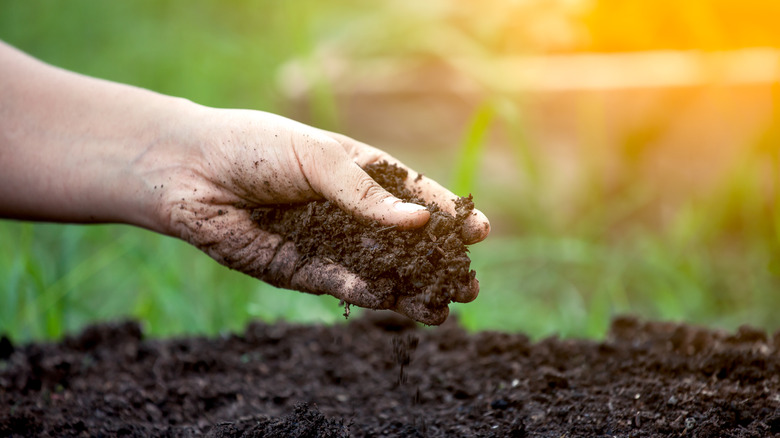Moles might look like cute cartoon characters, but they can cause a lot of damage to your yard. They will dig up your lawn to create their tunnel systems and molehills, or when searching for earthworms and other food, leaving uprooted plants in their wake. If you’re tired of seeing these furry critters wreak havoc on your property, you might be looking for deterrents. However, before you jump into DIY pest control hacks to scoot them out of your yard, you might want to focus on tweaking your landscaping so you’re not accidentally attracting them in the first place.
Specifically, make sure your yard doesn’t have continually damp soil since that can be appealing to these pests. This is because super moist soil is easier to dig through and is usually more rich with insects. If your yard has the perfect conditions to sustain their burrows, these critters will naturally begin to dig and establish themselves in your yard. But if the conditions aren’t ideal, they might continue on their way, bypassing your yard altogether.
Why garden moles like damp soil

Damp soil is perfect for moles for several reasons. First, it’s much easier to manipulate than dry, compact soil. That means digging their tunnel systems comes without much difficulty, which naturally makes the yard more attractive for them to set up their home. That’s an important feature for these critters — for the super motivated mole, it can burrow up to 18 feet per hour and over 100 feet per day, so dense, dry soil would significantly slow it down.
Consistently moist soil also creates a buffet of food for these furry critters. Wet soil is oftentimes filled with earthworms and grubs, which are their favorite foods. This is because earthworms are mostly made of water, so they need a damp environment to stay hydrated, while grubs prefer moist soil to lay their eggs. And moles need a lot of food to survive — in fact, they can eat the equivalent of their weight in bugs daily. Therefore, it’s safe to assume they’re pretty food motivated.
How to prevent overwatering your lawn
To prevent creating a welcoming environment, ensure you don’t overwater your lawn. The majority of conventional lawns only need 1 to 1.5 inches of water per week, so calibrate your sprinkler system accordingly so it runs for the right amount of time. To do so, multiply .62 gallons by the square feet of your yard. Take that number and then divide it by the sprinkler’s water flow rate — that number will tell you how many minutes you need for healthy hydration.
Other than the amount of water you use, you should also be careful of other factors. For example, make sure you water shaded areas less since they don’t dry out as quickly, and avoid watering in the evening since the water doesn’t have a chance to evaporate. You also want to make sure downspouts aren’t pointed into the grass, which can create a swampy yard. Lastly, while you may not be able to predict it with perfect accuracy, take into account the amount of rainfall you get. If you live in a rainy area, you will not need to water your lawn yourself as often. Keep these factors in mind, and you should be able to get rid of moles in your backyard and garden.